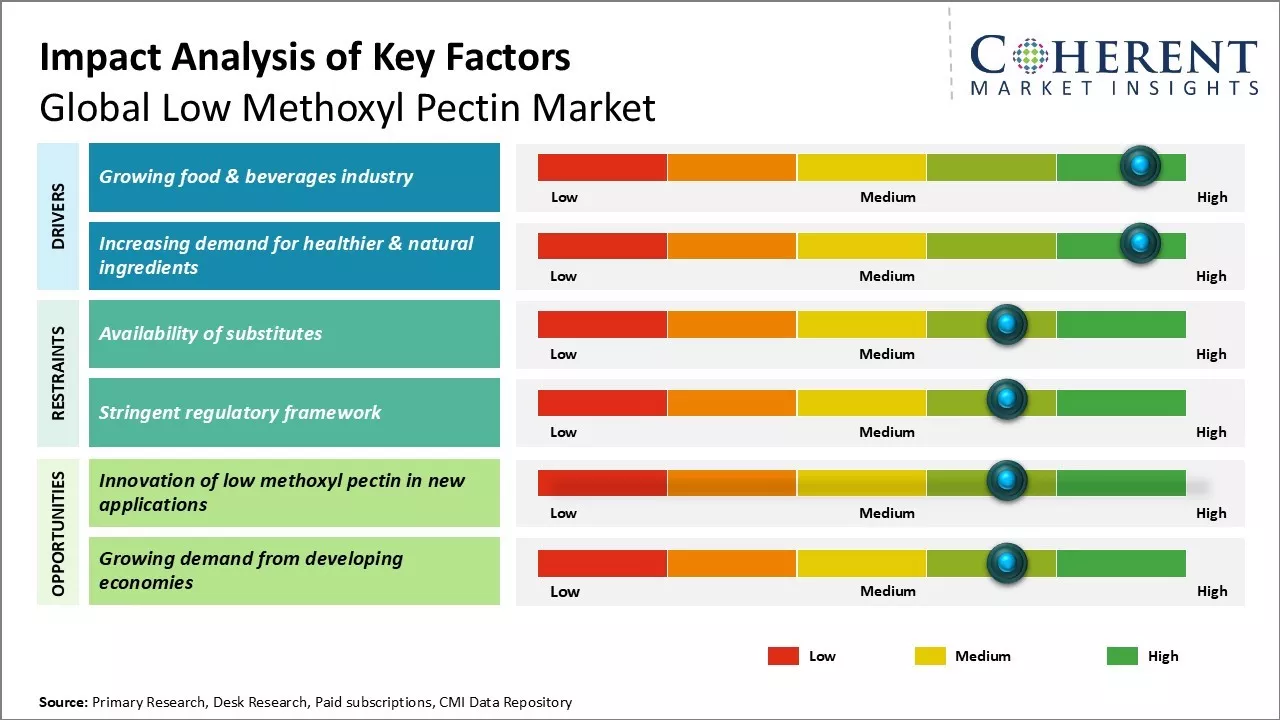The global low methoxyl pectin market is estimated to be valued at USD 580.1 Mn in 2025 and is expected to reach USD 982.1 Mn by 2032, exhibiting a compound annual growth rate (CAGR) of 7.8% from 2025 to 2032.

To learn more about this report, Request sample copy
The increasing use of low methoxyl pectin as a stabilizer, thickener, and gelling agent in various food applications, such as bakery fillings, dairy products, and other beverages, is driving the demand for low methoxyl pectin. Low methoxyl pectin is considered a substitute for sugar and fat in reduced calorie food products owing to its texturizing properties. This is expected to provide opportunities for growth in the low methoxyl pectin market during the forecast period.
Market Driver - Growing food & beverages industry
The global food and beverages industry has seen substantial growth over the past few decades. Rapid urbanization, growing middle class population, and changing lifestyles have been key growth drivers. As people's disposable incomes rise, they are willing to spend more on processed, packaged, and ready-to-eat foods. This has created opportunities for food companies to innovate and introduce numerous new product varieties into the market.
Low methoxyl pectin plays an important role as a gelling, thickening, and stabilizing agent in many food and beverage products. It is commonly used in jams, jellies, fruit spreads, desserts, dairy products, and various beverages. With increasing consumption of these packaged food categories, the demand for functional ingredients like low methoxyl pectin has risen steadily. Food makers rely on it to provide a good texture and shelf stability to products without compromising on the taste. It allows them to launch innovative packages and on-the-go consumption options.
Evolving dietary trends have also supported this growth. Consumers now prefer healthier choices and are more health conscious. They seek out products with clean labels and fewer artificial additives. Low methoxyl pectin addresses these needs well as it is derived from citrus fruits and apples and has no undesirable chemical components. Its natural credentials help brands to formulate and market food items as being more nutritious. This clean image acts as a unique selling point in the premium segment.
The urban population across emerging nations like India, China, Brazil, etc. have become more affluent and brand conscious over the past decade. International food companies have increased their focus on these regions seeing lucrative prospects. Their aggressive marketing strategies and wide distribution have augmented the food consumption patterns here. As lifestyle diseases rise, people also want convenient packaged foods that improve their quality of life. This expanding the consumer base of these developing markets will continue to drive the low methoxyl pectin market.
Joining thousands of companies around the world committed to making the Excellent Business Solutions.
View All Our Clients